
Atom in Greek means "cannot be split".
However, atom can be broken down into (3) parts,
- Proton ( positive (+) charge )
- Neutron ( neutral )
(Protons and neutrons form the nucleus in the center)
- Electron ( negative (-) charge )
(Electrons move around the nucleus)
J.J Thompson discovered “electron” in the late 1890s.
Ernest Rutherford discovered “proton” in 1909 and “nucleus” in 1911.
James Chadwick discovered “neutron” in 1932.
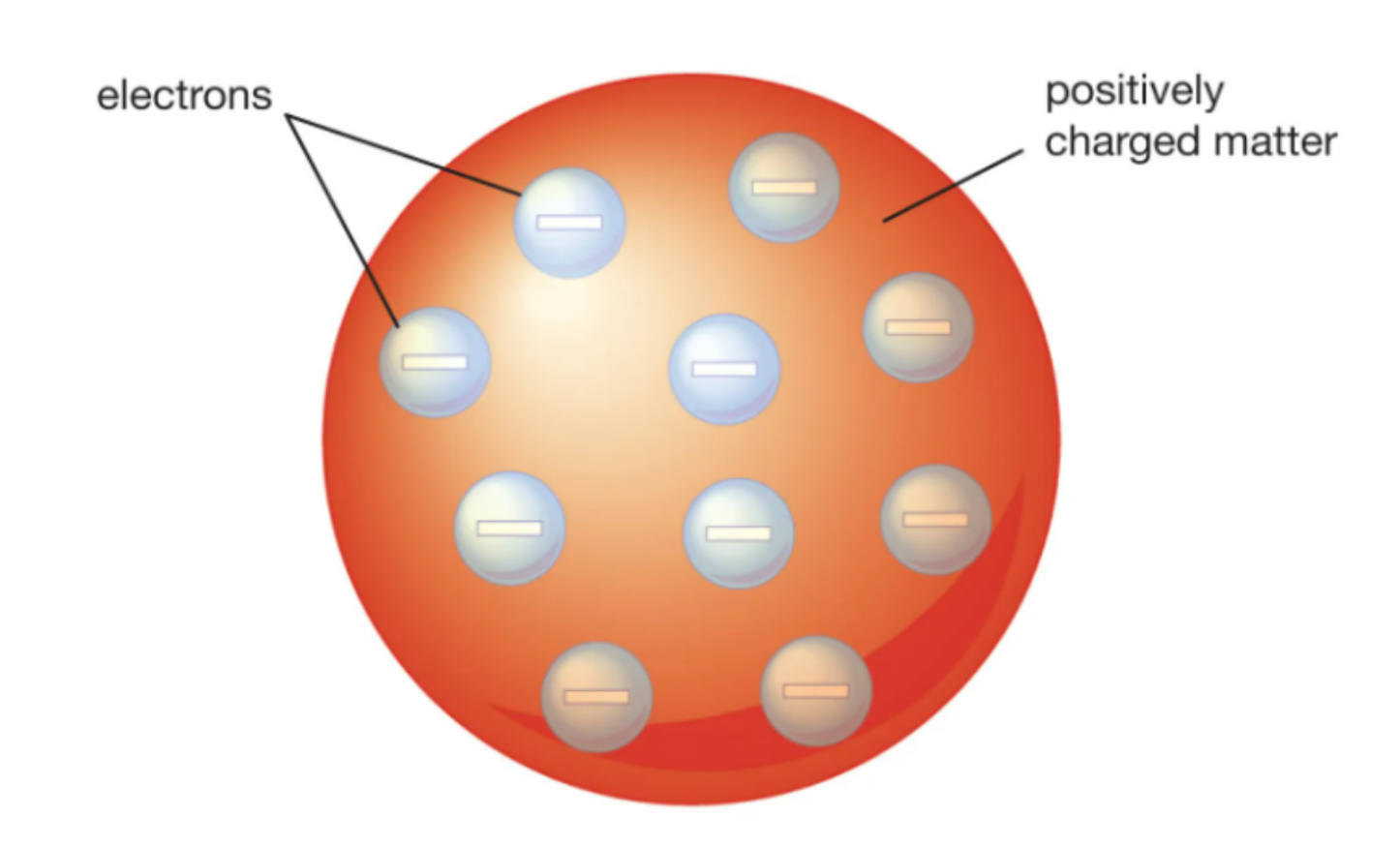
Different parts of the atom were scattered throughout the structure.
An atom is made up of a positively charged sphere in which electrons are embedded.
Firing at gold foil with α (alpha) particles
α (alpha) particles
- Positive particles
- Nucleus of Helium - 4 which consists of 2 protons & 2 neutrons
- Helium 4 - an isotope of helium
(Isotope - each of 2 or more forms of the same element
- An equal number of protons but a different number of neutrons)
Result
A few (about 1 in 8000) deflected in various directions.
Most of the particles passed straight.
Conclusion
Atom is mostly empty space.
Positive particles are packed into a dense nucleus at the center.
The repelling of positive particles (protons & α (alpha) particles) makes them deflect.
| Particle | Relative Mass | Relative Charge | Charge / C | Mass / kg |
|---|---|---|---|---|
| Protons | 1 | + 1 | + 1.6 × 10^-19 | 1.67 × 10^-27 |
| Neutrons | 1 | neutral | 0 | 1.67 × 10^-27 |
| Electrons | 0.0005 | - 1 | - 1.6 × 10^-19 | 9.11 × 10^-31 |
Number of electrons = number of protons (opposite charge)
Up quark = (+ ⅔ e)
Down quark = (- ⅓ e)
Proton = 2 up quark + 1 down quark 10^-19
(⅔ + ⅔) + (-⅓)
4/3 + (-⅓)
3/3 = +1
Neutron = 1 up quark + 2 down quark
⅔ + [(-⅓) + (-⅓)]
⅔ + (-⅔)
= 0
Charge of proton = +1
Charge of electron = -1
Charge of neutron = 0
Positive charge = negative charge
Atom has no overall charge.
Protons & neutrons determine the mass of an atom.
Electrons determine the size of an atom.
Proton is 1840 times heavier than an electron so electrons are not considered for the mass of an atom.
Atomic number = Number of protons or number of electrons
Mass number(amu - atomic mass unit) = Number of protons + Number of neutrons
Number of neutrons = mass number - atomic number
1 amu = 1.67 × 10-27 kg
Mass number of H2SO4 (Sulfuric Acid)
H = 1amu, S = 32amu, O = 16amu
(1 × 2) + 32 + (16 × 4)
= 98 amu
- Hydrogen is the only element that doesn’t have neutrons. (Its isotopes have)
- Atomic number differentiates one element from another.
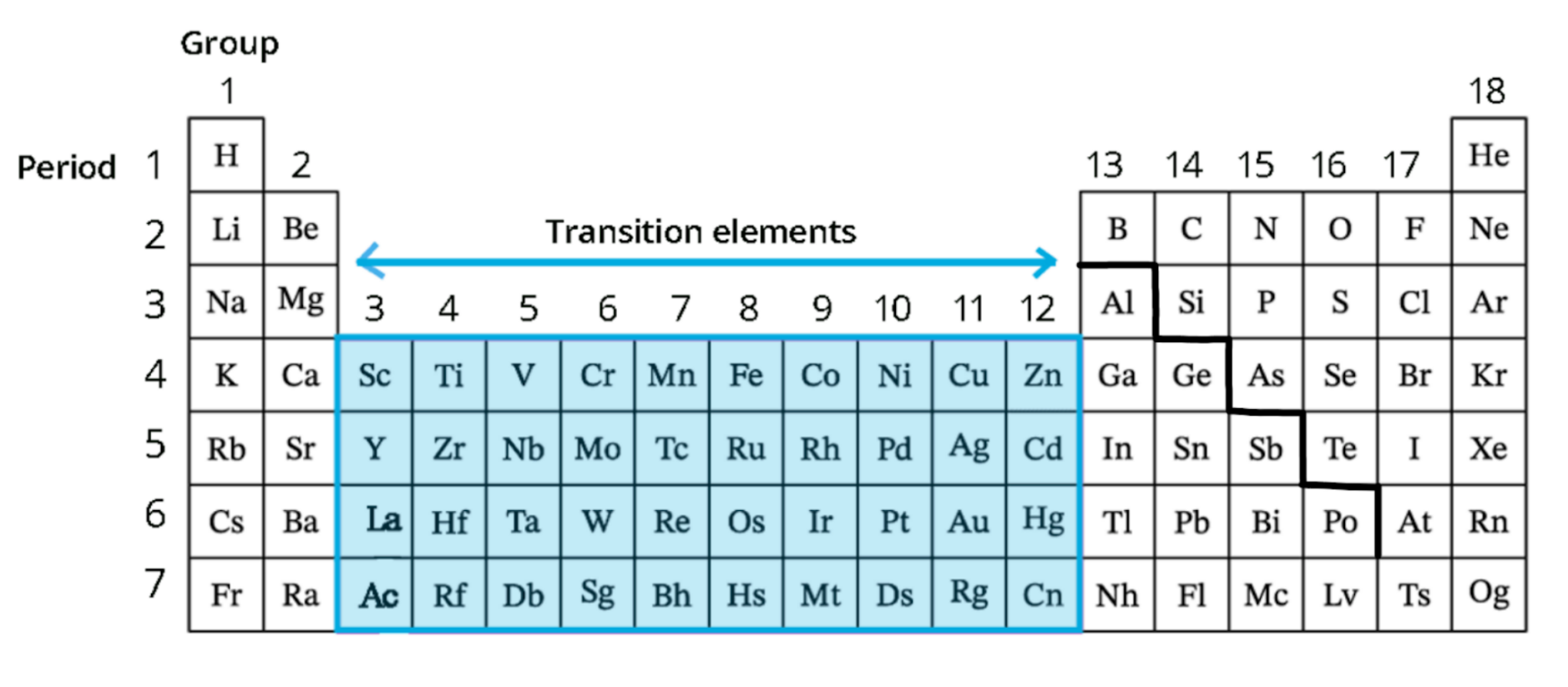
In the periodic table,
7 periods (horizontal / rows)
18 groups (vertical / columns) - with transition elements
8 groups (vertical / columns) - without transition elements
Total - 118 elements
Natural - 94 elements
Man-made - 24 elements
Elements with the same number of electrons in their outermost shell are put in the same group.
Period number defines the number of shells each element has.
Transitional line/dark line/zigzag line
Left side of dark-line – metal
Right side of dark-line – non-metal
| Atomic Number | Element Name | Symbol | Electron per shell | Metal / Non-metal | Atom / Molecule | Group |
|---|---|---|---|---|---|---|
| 1 | Hydrogen | H | 1 | Non-metal | Molecule, H2 | Group-7 |
| 2 | Helium | He | 2 | Non-metal | Atom | Group-8 |
| 3 | Lithium | Li | 2, 1 | Metal | Atom | Group-1 |
| 4 | Beryllium | Be | 2, 2 | Metal | Atom | Group-2 |
| 5 | Boron | B | 2, 3 | Non-metal (metalloid) | Atom | Group-3 |
| 6 | Carbon | C | 2, 4 | Non-metal | Atom | Group-4 |
| 7 | Nitrogen | N | 2, 5 | Non-metal | Molecule, N2 | Group-5 |
| 8 | Oxygen | O | 2, 6 | Non-metal | Molecule, O2 | Group-6 |
| 9 | Fluorine | F | 2, 7 | Non-metal | Molecule, F2 | Group-7 |
| 10 | Neon | Ne | 2, 8 | Non-metal | Atom | Group-8 |
| 11 | Sodium | Na | 2, 8, 1 | Metal | Atom | Group-1 |
| 12 | Magnesium | Mg | 2, 8, 2 | Metal | Atom | Group-2 |
| 13 | Aluminum | Al | 2, 8, 3 | Metal | Atom | Group-3 |
| 14 | Silicon | Si | 2, 8, 4 | Non-metal (metalloid) | Atom | Group-4 |
| 15 | Phosphorus | P | 2, 8, 5 | Non-metal | Molecule, P4 | Group-5 |
| 16 | Sulfur | S | 2, 8, 6 | Non-metal | Molecule, S8 | Group-6 |
| 17 | Chlorine | Cl | 2, 8, 7 | Non-metal | Molecule, Cl2 | Group-7 |
| 18 | Argon | Ar | 2, 8, 8 | Non-metal | Atom | Group-8 |
| 19 | Potassium | K | 2, 8, 8, 1 | Metal | Atom | Group-1 |
| 20 | Calcium | Ca | 2, 8, 8, 2 | Metal | Atom | Group-2 |
Electronic structure
First shell – 2 electrons
Second shell – 8 electrons
Third shell – 8 electrons
Fourth shell – 2 electrons
Want to give electrons - metal
Want to accept electrons - non-metal
Both metal & non-metal properties - metalloid
Na (Sodium)
+11p + -11e
Na atom = 0 charges
Loses 1 electron
+11p + -10e = +1
Na+ (sodium ion) – cation
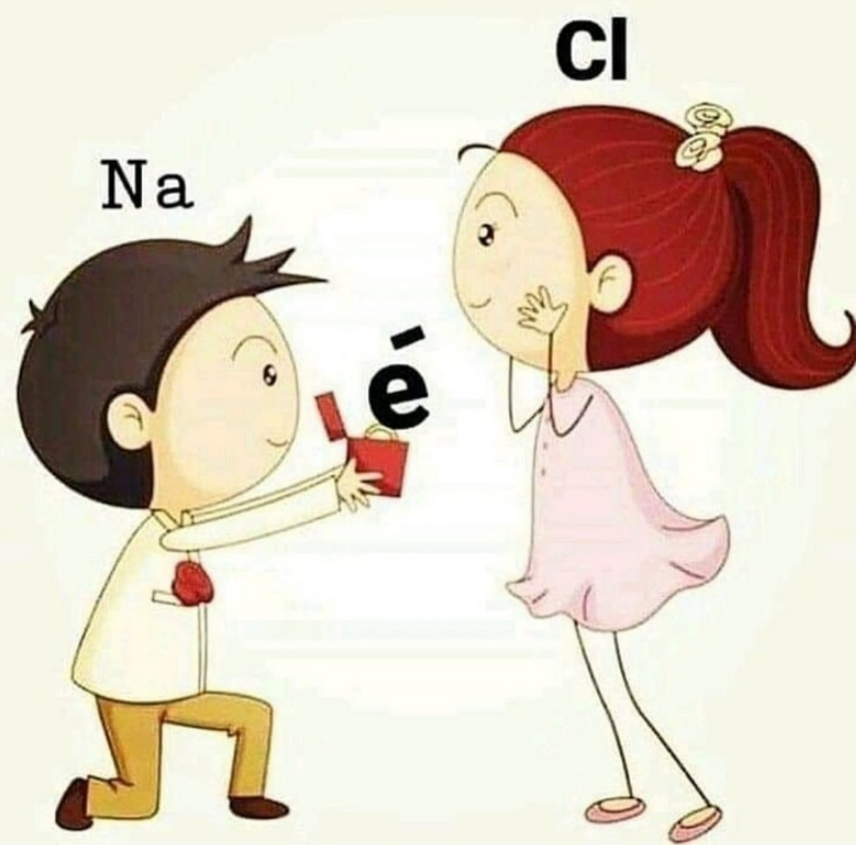
Cl (Chlorine)
+17p + -17e
Cl atom = 0 charges
Accept 1 electron
+17p + -18e = -1
Cl- (Chlorine ion) – anion
Cation - a positively charged ion (Na+, Mg2+)
Anion - a negatively charged ion (Cl-)
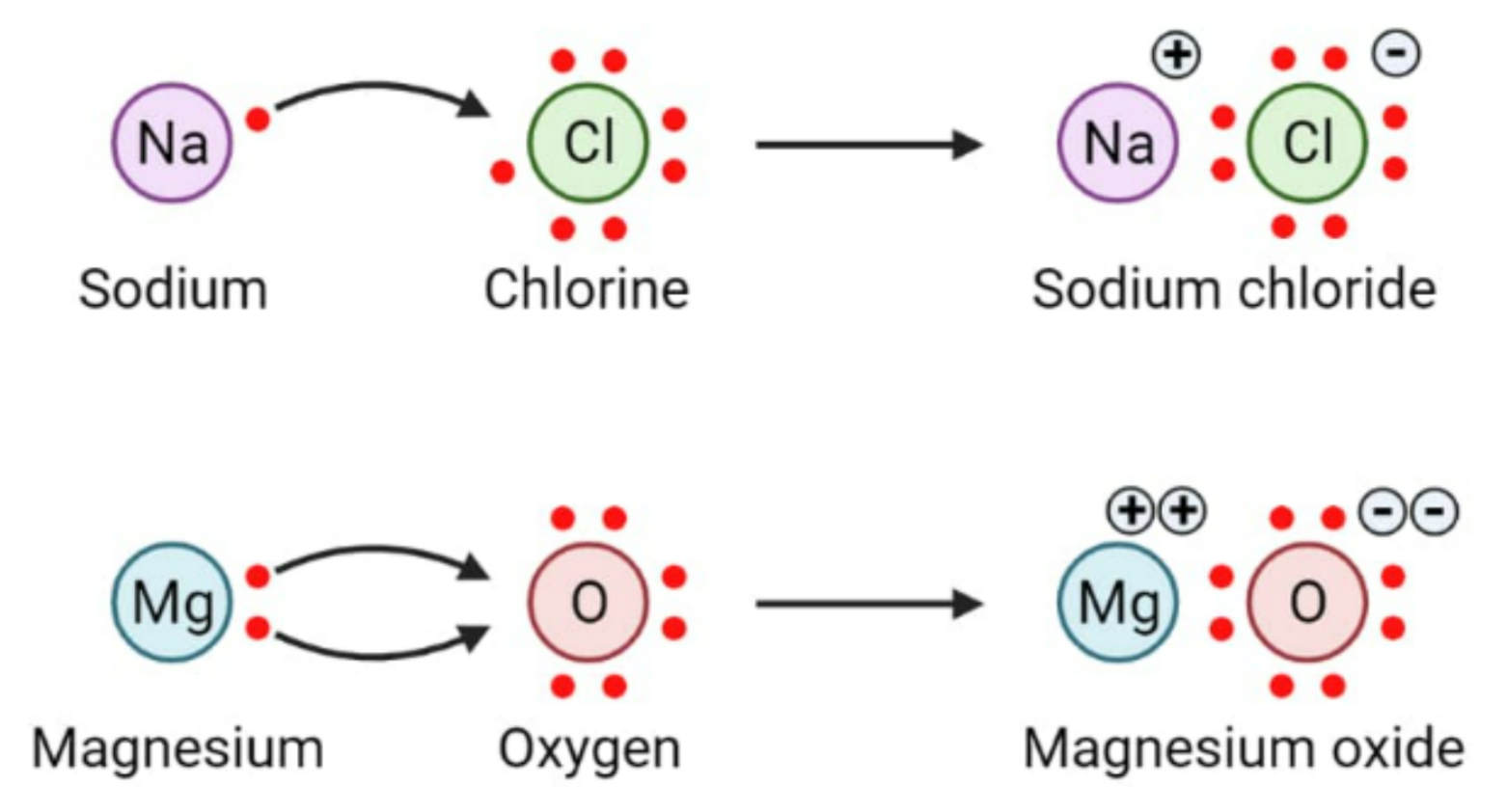
Oppositely charged particles attract each other.
The attractive force between those 2 particles - the electrostatic force of attraction.
An ionic bond is an electrostatic force that holds ions together in an ionic compound.
An ionic compound has a crystalline form, and a high melting/boiling point because the electrostatic force between the ions is very strong that it needs a lot of energy to break it.
Ionic compounds conduct electricity only when they are molten or dissolved in water.
- Because the ions are firmly held and are not free to move in the solid state.
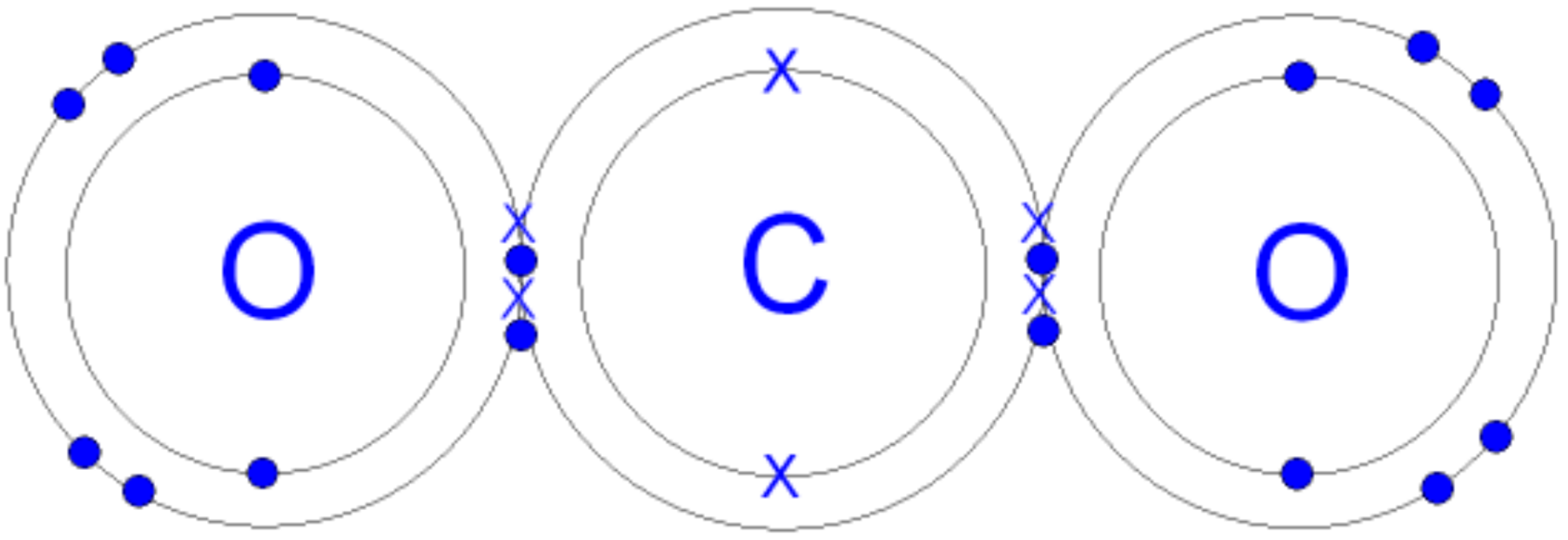
- Found between non-metals
- Electrons are shared - not totally given.
2 electrons from the outermost shell of each atom are shared.
Full electrons (8) in the outermost shell of “O” & “C”.
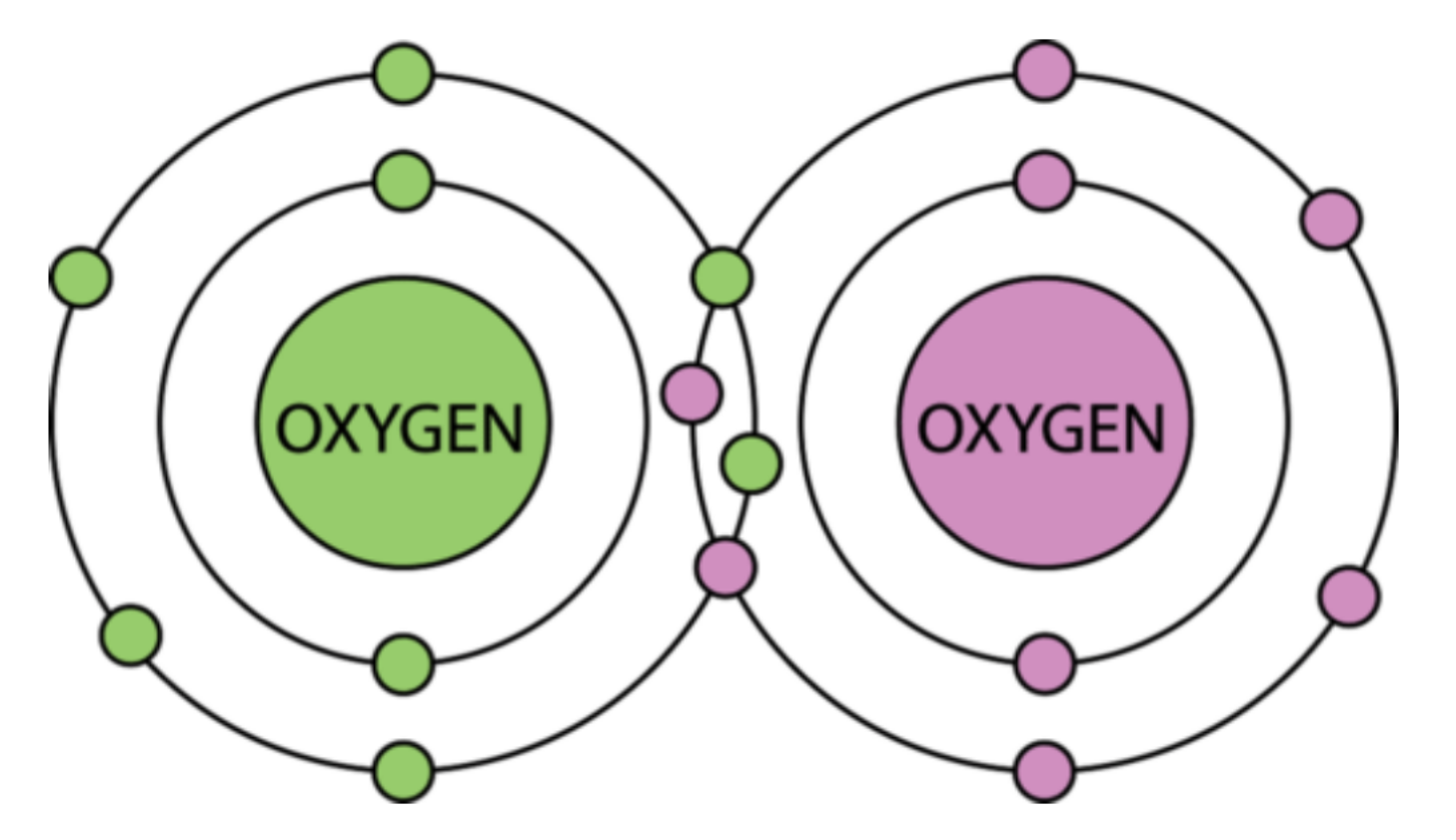

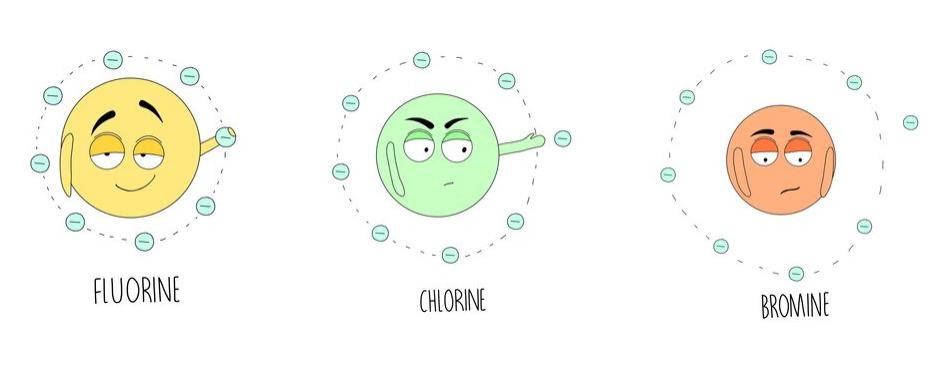
Always want to receive 1 electron.
F - Fluorine - gas (pale yellow)
Cl - Chlorine - gas (yellowish green)
Br - Bromine - volatile liquid (reddish brown)
I - Iodine - solid
Atomic number, mass number, density, melting, boiling point increase as they go down the group.
Reactivity decrease as they go down the group.
** Group-1 elements are never found as free elements in nature as they are highly reactive.
** Group-1 elements are never found as free elements in nature as they are highly reactive.
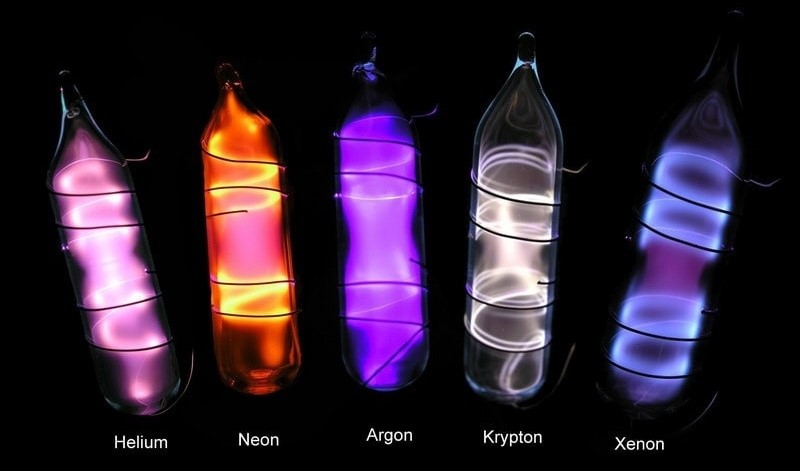
Inert gases - unreactive gases
Outermost shells are full.
He - Helium
Ne - Neon
Ar - Argon
Kr - Krypton
Xe - Xenon
Atomic number, mass number, melting, boiling point increase as they go down the group.
** They glow when electricity passes through them.
** Ar, Kr, and Xe can react only when they are forced to react under some circumstances. Because the electron attraction to the nucleus is weak.